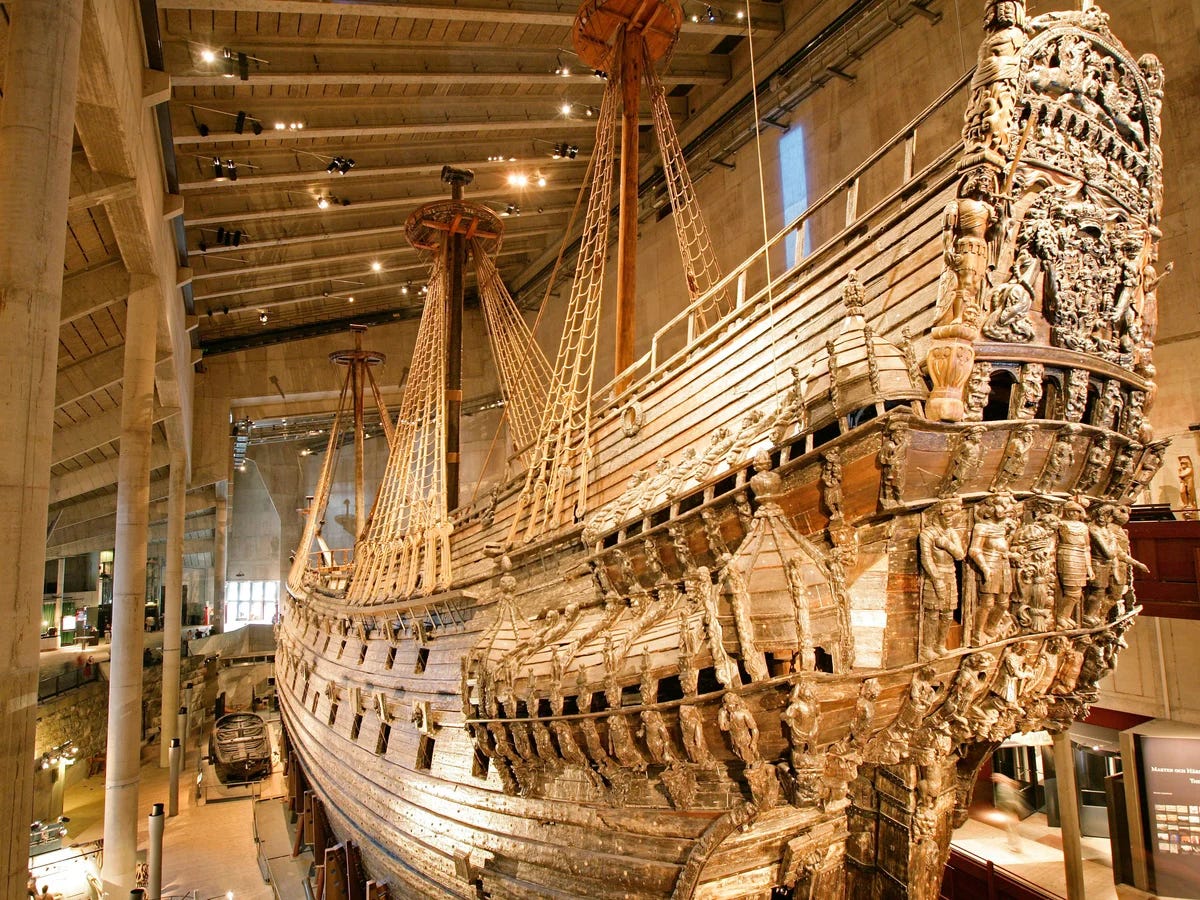Emily Lombardo is a writer and digital marketing strategist based in NYC.
Emily here. In 1628, after two years of elaborate and tireless construction, the Swedish Vasa warship was ready to make her maiden voyage from Stockholm.
700 sculptures and 64 bronze cannons were loaded on board, making it one of the most powerfully armed warships in the world. Thousands, including King Gustavus Adolphus—the ship’s commissioner—had gathered to watch its departure. But then, just 130 meters from the dock, a light breeze hit the ship, capsizing it and killing around 30 people trapped on board. The crowd watched as it sank in the Stockholm Harbor, where it remained until 1961.
Why is this interesting?
For two reasons. The first, of course, being the Vasa’s spectacular and highly visible failure. With Sweden fighting a war against Poland at the time, the Vasa was intended to be the new crown jewel in their fleet. The King wanted this larger-than-life ship to be built and sent to war as quickly as possible, and while its builder Henrik Hybertsson had delivered warships before, the Vasa’s size—as well as the number of arms intended to be on board—was a first for him.
After the great failure, the ship’s master admitted that a prior demonstration with Sweden’s then-Vice Admiral had revealed the Vasa’s weakness. Thirty men had ran up and down the deck to test the ship’s stability, but had to be stopped when the ship seemed close to capsizing. However, the King was not present at the demonstration, and his desire for the ship to go to war was so strong that the issues went unreported. (Even with this revelation, no one could be held accountable without removing necessary military personnel in the midst of an ongoing war, or besmirching the King’s name, so the case was shut.)
The second reason is that you can against all odds see the original Vasa—almost completely intact—in Stockholm today.
The location of the wreck had been forgotten until, in the 1950s, an amateur archeologist discovered it with the help of a Swedish Navy salvage diver. Quickly, Sweden’s National Heritage Board got involved, and Scandinavia’s largest marine salvage company, Broströms, offered to lift the ship up pro bono.
Divers worked in total darkness underwater to build six tunnels underneath the shipwreck. Wires were put through the tunnels, and attached to two pontoons tasked with hauling it back to the surface. Once out, the hull had to be made watertight again. Four years after work began, the Vasa floated in the Stockholm Harbor once more.
Today, the Vasa in the harbor serves as a powerful example of what can go awry when leaders with lofty goals (or their underlings) don’t want to hear bad news. When people can’t communicate honestly with leadership about their work, or the time it takes to do their job well, catastrophe ensues. Just visit the Vasamuseet (Vasa museum)—today full of thousands of artifacts, along with the ship—to see for yourself. (EL)
—
Thanks for reading,
Noah (NRB) & Colin (CJN) & Emily (EL)
—
Why is this interesting? is a daily email from Noah Brier & Colin Nagy (and friends!) with editing help from Louis Cheslaw about interesting things. If you’ve enjoyed this edition, please consider forwarding it to a friend. If you’re reading it for the first time, consider subscribing.




